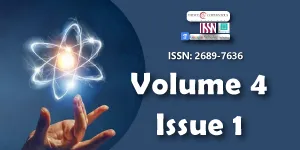Research on rolling bearing fault feature extraction based on entropy feature
Main Article Content
Abstract
In large machinery, the most common element we can use is rolling bearing. When the rolling bearing fails, it is very likely to affect the normal operation of the equipment, or even cause danger. Therefore, it is necessary to monitor and diagnose the bearing fault in advance. The most important step in fault diagnosis is feature extraction. This is the research content of this paper. In this paper, the approximate entropy, the sample entropy and the information entropy are analyzed, and the feature is extracted to diagnose the rolling bearing fault. The specific research contents are as follows: (1) Firstly, the concepts of approximate entropy, sample entropy and information entropy are introduced briefly, and the approximate entropy, sample entropy and information entropy of rolling bearing vibration signals under different fault modes are calculated. The feasibility and shortcomings of the features extracted from these three entropy in the fault characteristics of rolling bearing are analyzed. (2) In order to make up for their defects, a method of fault feature extraction based on approximate entropy, sample entropy and information entropy is proposed, and its feasibility is verified. (3) Simulation experiments are carried out to calculate the accuracy of fault feature extraction based on the joint analysis of approximate entropy, sample entropy and information entropy.
Downloads
Article Details
Copyright (c) 2021 Wang Z, et al.

This work is licensed under a Creative Commons Attribution 4.0 International License.
Licensing and protecting the author rights is the central aim and core of the publishing business. Peertechz dedicates itself in making it easier for people to share and build upon the work of others while maintaining consistency with the rules of copyright. Peertechz licensing terms are formulated to facilitate reuse of the manuscripts published in journals to take maximum advantage of Open Access publication and for the purpose of disseminating knowledge.
We support 'libre' open access, which defines Open Access in true terms as free of charge online access along with usage rights. The usage rights are granted through the use of specific Creative Commons license.
Peertechz accomplice with- [CC BY 4.0]
Explanation
'CC' stands for Creative Commons license. 'BY' symbolizes that users have provided attribution to the creator that the published manuscripts can be used or shared. This license allows for redistribution, commercial and non-commercial, as long as it is passed along unchanged and in whole, with credit to the author.
Please take in notification that Creative Commons user licenses are non-revocable. We recommend authors to check if their funding body requires a specific license.
With this license, the authors are allowed that after publishing with Peertechz, they can share their research by posting a free draft copy of their article to any repository or website.
'CC BY' license observance:
|
License Name |
Permission to read and download |
Permission to display in a repository |
Permission to translate |
Commercial uses of manuscript |
|
CC BY 4.0 |
Yes |
Yes |
Yes |
Yes |
The authors please note that Creative Commons license is focused on making creative works available for discovery and reuse. Creative Commons licenses provide an alternative to standard copyrights, allowing authors to specify ways that their works can be used without having to grant permission for each individual request. Others who want to reserve all of their rights under copyright law should not use CC licenses.
Cheng D (2005) Controllability of switched bilinear systems. IEEE Trans Automatic Control 50: 511-515. Link: https://bit.ly/3g6Cgbf
Ding XX, He QB (2016) Time-frequency manifold sparse reconstruction:A novel method for bearing fault feature extraction. Mechanical Systems and Signal Processing 80: 392-413. Link: https://bit.ly/3AKSjUi
Poor H (1985) An Introduction to Signal Detection and Estimation. New York: Springer-Verlag, chapter 4. Link: https://bit.ly/3y0rR7r
Smith B (2016) An approach to graphs of linear forms, accepted. Link: https://bit.ly/3ySi987
Cheng D (2005) On logic-based intelligent systems. In Proceedings of 5th International Conference on Control and Automation 71–75. Link: https://bit.ly/37S4WAd
Cheng D, Ortega R, Panteley E (2005) On port controlled hamiltonian systems, in Advanced Robust and Adaptive Control — Theory and Applications. In D Cheng, Y Sun, T Shen and H Ohmori, Eds. Beijing: Tsinghua University Press 2005: 3–16.

